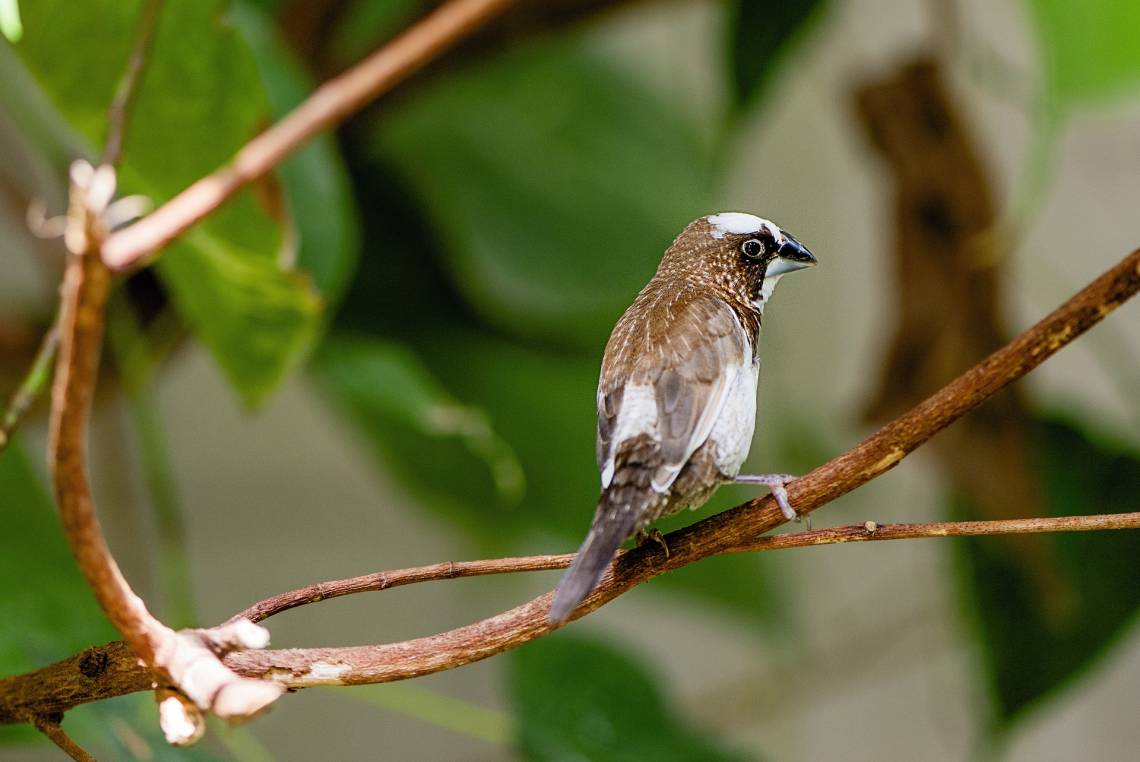Dull-Colored Birds Don’t See The World Like Bright Birds Do
Categorizing colors carefully just isn’t a thing for birds who aren’t very flashy

DURHAM, N.C. -- Fall is here, and we see the leaves turning yellow, orange or red thanks to a trick of our vision: our brains categorize colors. Scientists have learned that birds with colorful markings do this too. But what about drab birds that don’t rely on color?
According to a new Duke University study, the ability to mentally categorize colors is not a universal avian attribute, and dull-colored birds may see the world in a completely different way than their colorful cousins.
To test whether birds separate colors into categories, a team led by Duke postdoctoral researcher Eleanor Caves selected eight colors varying continuously from orange to red, and made little disks with either one solid color or a combination of two colors. Birds were then trained to flip over only the disks that showed two different colors, in exchange for a food reward.
In previous experiments, the team showed that female zebra finches presented with a continuum of orange to red colors will categorize these into two distinct groups with a clear threshold. These birds have brightly colored orange to red beaks, which may act as a signal of health when females are choosing their mate.
This trick of our brains is called categorical perception, where some sort of continuous variation is binned into categories separated by thresholds. Things on opposite sides of this threshold will appear more distinct than things on the same side of the threshold, even if they are in fact just as different. The zebra finches saw a continuum of colors as just two.
In a new study, appearing Oct. 26 in The American Naturalist, the team turned their attention to Bengalese finches, a species of brown, black and white birds that don’t rely on colorful signals when choosing a mate. When presented with the same continuum of colors, Bengalese finches showed no evidence of a threshold between orange and red. Instead, they picked only disks that were on opposite sides of the continuum and differed a lot in hue. They seemed to be paying more attention to differences in brightness than the zebra finches.
“Brightness matters for all of these birds, but it really is what is driving the ability of the Bengalese finch to discriminate among colors, not hue,” says Steve Nowicki, a Duke biology professor who is senior author on the study.
In zebra finches, on the other hand, brightness differences simply reinforced differences in hue.
“These birds were a lot more different than we were expecting, given how superficially similar they are,” Caves said. This difference in color perception may not be due to peculiarities of the birds’ eyes, but rather to how their brains evolved to interpret signals.
In zebra finches, a female needs to identify the healthy red-beaked male. In Bengalese finches, however, females may rely only on male songs to choose their mates, so the orange-red gradient is far less relevant to them.
“It’s probably both a matter of their evolutionary environment, what signals and colors they evolved to find important, but also their immediate developmental environment,” Caves said.
These results show that vision depends on much more than the eyes. The colors that an animal sees depend on how important that color is for its everyday life.
“A two-species comparison is not much to hang an evolutionary story on,” Nowicki said. Nonetheless, these two species are enough to point out flaws in previous assumptions. “People have often assumed that all of these birds should be more or less the same when it comes to vision,” he continued. “To just find one exception shows that that’s not necessarily the case.”
But the Bengalese finches may be outliers among birds. While both Bengalese finches and zebra finches are domesticated, the Bengalese finches are more distant from their wild cousins. It is possible that the domestication process, where food is readily available and mates are assigned rather than chosen, relaxed the selection on these birds’ ability to categorize signals.
“The effect of domestication on various sensory capabilities is pretty understudied,” Caves said.
The authors hope that a more comprehensive study with several species will shed light on how the perception of color relates to the presence of colorful signals in birds. What these two species can say, however, is already a breakthrough.
“First we showed that birds can see the rainbow,” Nowicki said. “Now we’re saying: actually, not all of them do!”
Funding for this study was provided by the Duke University Office of the Provost.
CITATION: “Comparison of Categorical Color Perception in Two Estrildid Finches," Caves, E. M., Green, P.A., Zipple, M. N., Bharath, D., Peters, S., Johnsen, S., and Nowicki, S. The American Naturalist, Oct. 26, 2020. DOI: 10.1086/712379